Imagining the Unimaginable at Auschwitz-Birkenau
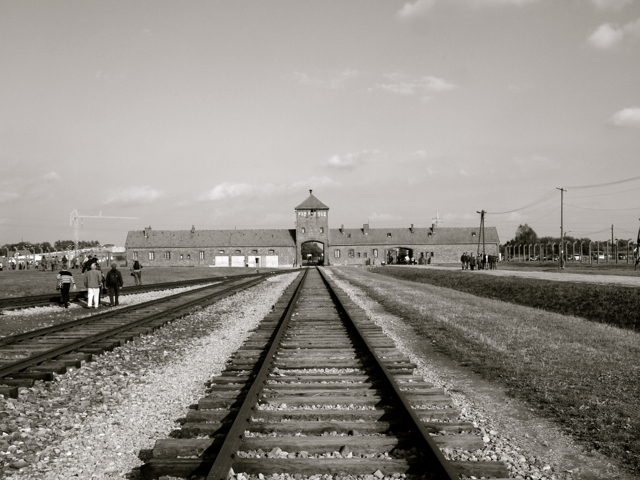
The sun was shining brightly that day in Oświęcim; a chilly but blue-skied September afternoon in southern Poland.
It would have been beautiful — if it hadn't felt so wrong.
The sun isn't supposed to shine at Auschwitz.
As I waited uneasily for my tour of Auschwitz I (the main base camp at the Auschwitz complex) in that bright sun, I secretly willed it to go away. Fluffy clouds and saturated colors just felt wrong in a place that holds so much darkness. But shine away it did, and I found myself realizing that, during the 4 years that Auschwitz operated as a concentration and death camp, there would have been many sunny days. Just like this one.
It was the first thought of many that day that simultaneously chilled my bones and made me want to cry.
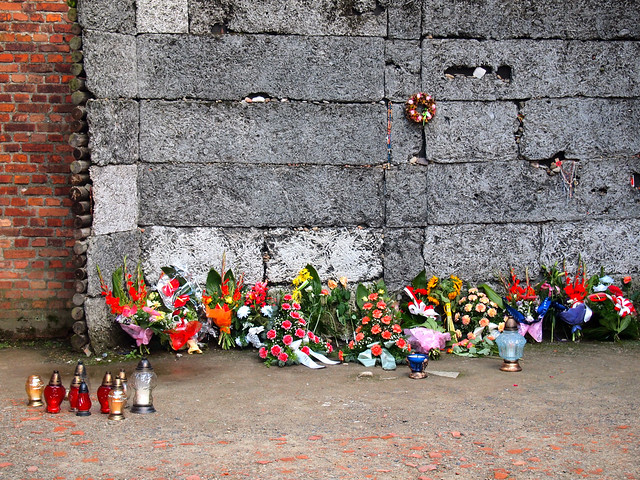
I've been told that understanding the Holocaust and why it happened just isn't possible. “You can't apply normal logic to the Nazis,” a tour guide in Berlin once told me. “If you can understand why the Nazis did what they did… well then I would worry about you.”
And it's true. Imagining what happened at these camps is nearly impossible. How can a person comprehend anything at all while standing in a spot where a million people were murdered for no good reason?
It all just seemed unreal.

At Auschwitz I, you are guided through buildings set up museum-style. Maps. Photos. Prison cells. Stories of people who became numbers. It didn't truly hit me, though, until we got to the part of the camp I just referred to as “The Rooms.”
The Room of Hair. The Room of Abandoned Luggage. The Room of Children's Shoes.
By the time we got to The Room of Children's Clothing (which also displayed haunting photos of skeletal children at Auschwitz), I knew tears were streaming down my face. And yet I could barely feel them. I could barely feel anything.
People often tell you that visiting such a devastatingly dark place makes you feel numb. But I didn't believe it until I experienced it for myself. The lack of logic, sense, or even basic human-ness makes a place like Auschwitz impossible to fully grasp, especially when you are there, staring the reality — and the proof — in the face.
As we exited the museum portion of the complex, our guide told us to take a closer look at the mugshot-style photos that lined the walls. Each showed a prisoner in white-and-black-striped clothing, beneath which was a name, the date the person arrived at the camp, and the date they died.
Very few of them survived at Auschwitz for more than 9 months.
When I took the bus over to Auschwitz II-Birkenau, the numbness continued. As did that infernal sunshine.
It shone down on me as I visited the barracks-style cabins that the prisoners were piled into.
Mocked me as I stood at the end of the railroad tracks where families were rent apart, many headed straight for the gas chambers.
Made me want to cry as I stood staring, soggy-eyed, at the rubble of the massive gas chambers/crematoriums that the Nazis hastily tried to destroy at the end of the war in order to erase evidence of their atrocities.
And did nothing to warm me up as we heard stories of Nazi guards telling prisoners to “remember where you put your clothes and shoes so you can find them after your shower” before ushering them into those gas chambers to kill them with Zyklon B, burn their bodies, and dump the ashes into small ponds nearby.
Numb, numb, numb.
And far too sunny.
In his will, Hitler blamed the whole of WWII — including the Holocaust — on the Jews. On the people he was systematically exterminating. No, there is no logic there; no sense to be made of it. He was a madman who somehow convinced people to follow him.
It's crazy, because, in the beginning, the “Final Solution to the Jewish Problem” did not include murdering anybody. Himmler, Hitler's right-hand man when it came to torture and evil ideas, actually suggested deporting all the “undesirables” to Madagascar. Just get them out of Europe.
But, somewhere along the way, the plans took a dark turn.
It began in 1939 with a program called Aktion T4, which lasted for 2 years and marked the first time in modern history that a government began murdering its own citizens based on what it considered to be genetic inferiority. Aktion T4 focused mostly on mentally ill people in Germany, with doctors “assisting” them in being euthanized. Eventually, though, Hitler turned his sights to gypsies, homosexuals, and especially the Jews.
Hitler came to power in January 1933; by June of that year, he passed laws against Jews holding authoritative jobs and going to schools with others. In 1935, the Nuremberg Laws were passed. These were anti-Semitic laws that set curfews and banned relationships between “Aryans” and “non-Aryans.” In 1938 the Night of Broken Glass took place, during which Jewish shops across Germany were ransacked and Jewish families were chased from their homes.
And then the concentration camps began. Followed not long after by the death camps like Auschwitz.
Auschwitz was actually a complex of 3 separate camps — Auschwitz I (the base camp), Auschwitz II-Birkenau (the extermination camp), and Auschwitz III- Monowitz (a labor camp). Auschwitz I began operation in 1940, with Auschwitz II following the next year. It is this second camp that most people are familiar with.
We all learned about the Holocaust in grade school. We read Anne Frank's diary and Elie Wiesel's “Night.” We heard tales of Hitler and the SS and the horrors that took place at concentration camps across Europe. But when you are actually standing there, in front of ruined gas chambers that took the lives of roughly ONE MILLION people?
That is not something you can learn from a textbook, or comprehend when you are hearing about it from half a world away.
Visiting a place like Auschwitz is not a pleasant experience. I can totally understand those people who will likely never visit a concentration camp because of how depressing they are. BUT, I also feel that visiting places like this — facing the reality of them — is important. It helps us recognize the cruelty inherent in the human race.
And hopefully helps us understand how important it is to never let something like this happen again.
Today, Auschwitz is a listed UNESCO World Heritage Site and also a museum. Visiting the site is meant to be educational, and I highly recommend it if you find yourself in the area.
Opening hours —
- 8:00 AM – 3:00 PM December through February
- 8:00 AM – 4:00 PM March, November
- 8:00 AM – 5:00 PM April, October
- 8:00 AM – 6:00 PM May, September
- 8:00 AM – 7:00 PM June, July, August
Getting there — Auschwitz is located on the outskirts of Oświęcim. It can be reached via train and then bus (or you can always hire a driver from a nearby larger city like Krakow). In between the 2 parts of the camp that visitors can see (Auschwitz I and Auschwitz II-Birkenau) a free shuttle bus runs every 15 minutes or so.
Guided tours — All groups are required to tour the museum part of Auschwitz with a guide, and guides are recommended for individuals, too, especially at Auschwitz I. (I went with a guide, and though the group was quite large, I learned a lot more than I would have had I just been wandering around on my own. Once we got to Auschwitz II-Birkenau, however, I went off on my own.)
Pricing — For any language that isn't Polish, guided tours of the whole site (Auschwitz I and Auschwitz II-Birkenau) run 40 PLN ($13.15 USD) for regular tickets and 30 PLN ($10 USD) for students. There is also a 4 PLN ($1.30) fee for headset rental, which is required for the guided tours of Auschwitz I.
Take your time — It's recommended to allow at least 3-4 hours at Auschwitz (at least 90 minutes apiece for the guided tour of Auschwitz I and visiting Auschwitz II-Birkenau).
Would you ever visit a “dark” place like Auschwitz?
*Thanks to Krakow Tourism, who set up my visit to Auschwitz.

Amanda Williams is the award-winning blogger behind A Dangerous Business Travel Blog. She has traveled to more than 60 countries on 6 continents from her home base in Ohio, specializing in experiential and thoughtful travel through the US, Europe, and rest of the world. Amanda only shares tips based on her personal experiences and places she's actually traveled!

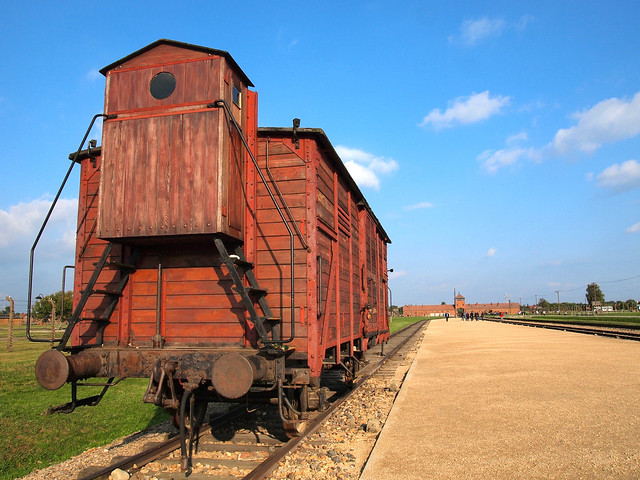
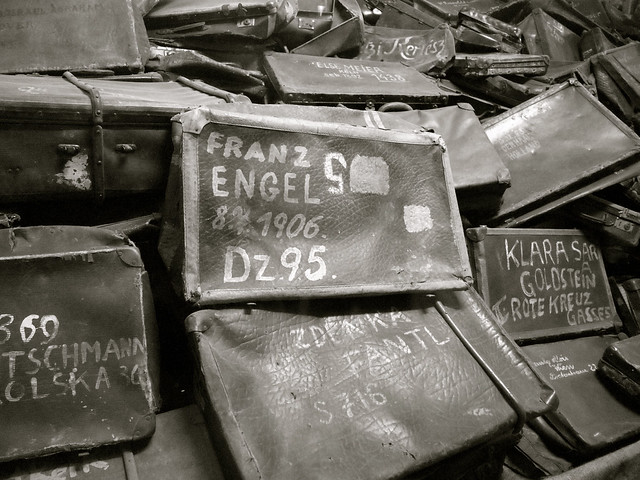
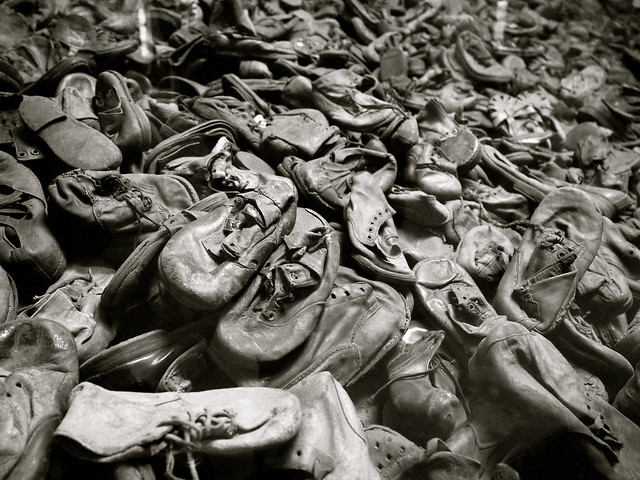


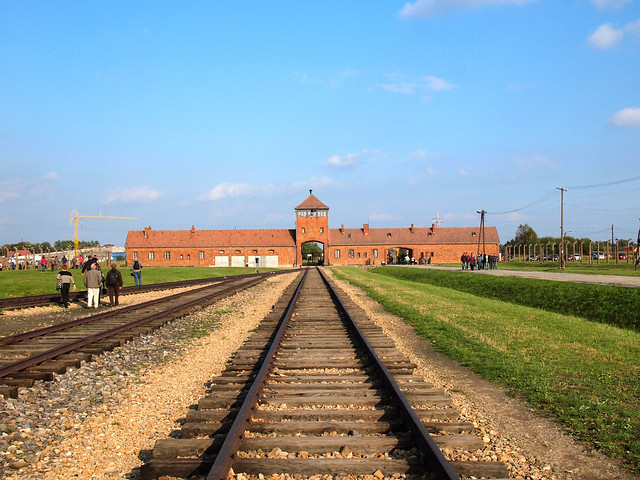
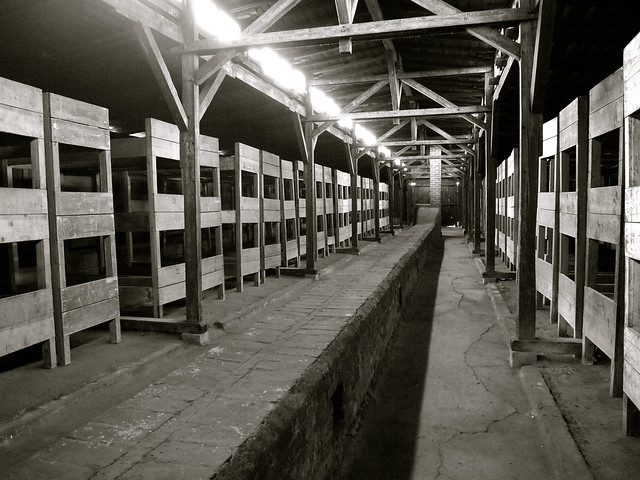

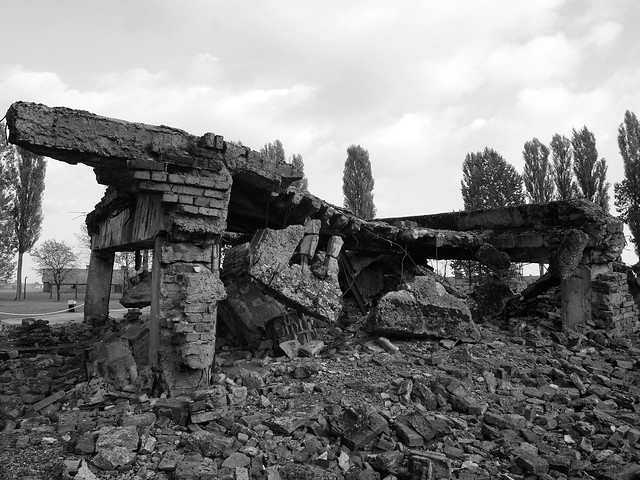
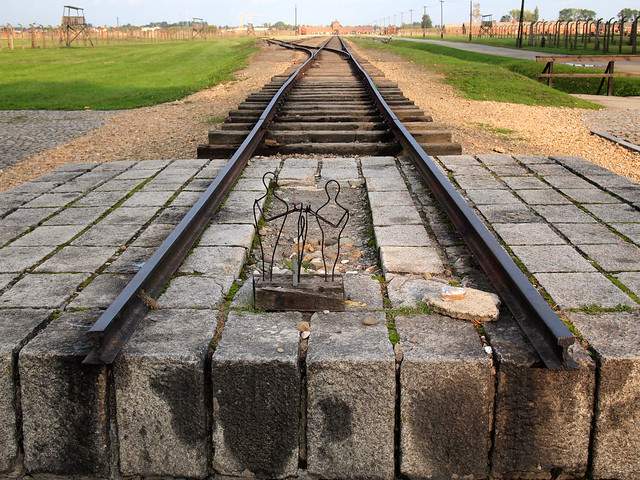
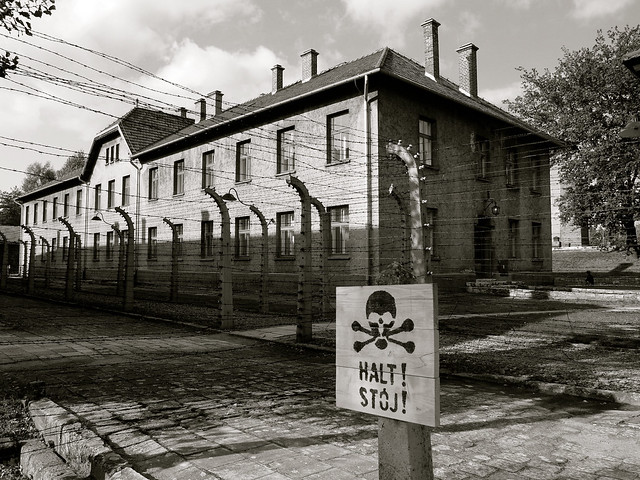

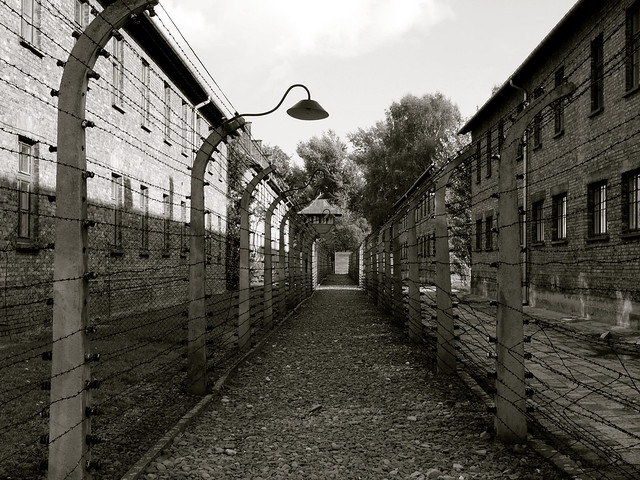
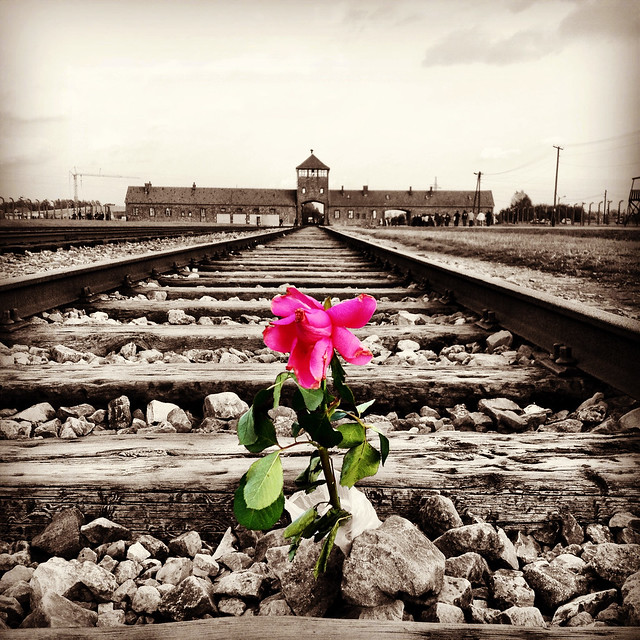









My grandmother was a prisoner in auschwitz but thank G-d managed to survive while most of her family perished. I remember tracing the numbers on her arm as a young child and learning about the horrors that it was testament to as I got older. Being a Jew, the holocaust is but one part of our long history that includes much senseless persecution. I don’t know that I will ever be able to bring myself to visit auschwitz, however, I am proud to look at my history and see how my people time and again managed not to not only survive but thrive despite what we’ve endured. My grandmother was fortunate to greet over 150 descendants of hers including 6 great great grandchildren which to me is the biggest victory over the nazis. Thank you for your article and the awareness you bring to the world.
I agree – surviving to see such a family grow is the biggest victory!
I don’t know if I would ever be able to visit but yes if I have a chance to visit I will visit. We all should visit this place so that the same thing can never happen again. Never again. Idk if it is because of the smoke from the factories or cremation that made sun to never shine on Auschwitz or was the god responsible but I have read sun never shine on Auschwitz. (and I feel it should shine bright so that the darkness will be gone.)
sadly enough I bet there are people who feel happy there..celebrate 🙁
it was not for ‘no reason’
..it was for the usual reasons, hate, greed, lust for money, control and power..that have driven humans, wars, conflict, forever.
the reasons European explorers came to Asia and the Americas, killed people ans stole their stuff, made them slavers
For those who feel that they would like to see Auschwitz or perhaps re-visit it there are some amazing You Tube Videos. This one is about a lady, Kitty Hart-Moxon, who was imprisoned there at age 17 and returns in 2015. https://www.youtube.com/watch?v=rD3ofEszi0Y. Chilling but interesting to hear a first-hand report, presented in an objective way.
Hey Amanda! Thank you for posting about this! I loved how you described your experience. I had a similar experience in 2014 when I visited Poland for the first time. Such an emotional roller coaster and life-changing experience!
An emotional roller coaster is exactly the phrase to describe it!
I went last night to watch Rose, by Martin Sherman, I still cannot cope, something I discovered 35 years ago when I visited Yad Vashem. I would only visit Auschwitz if I had so much messed up my daughter’s education that I needed to show her the real thing.
That’s very fair – it’s an incredibly difficult place to visit, and certainly not for everyone!
I visited it last month and I was absolutely shock by all the suffering…I also wrote about it:
https://enplenosigloxxi.wordpress.com/2015/05/11/auschwitz/
Heavy, heavy read. I chose not to visit when I had the chance but I likely will next time I find myself in that part of the world. The Holocaust Museum in D.C. was quite the experience in itself and is a must-see (if you asks me) when in the District. Great pics, too. Cheers.
It’s a very heavy place to visit, for sure. But, in the end, I’m glad I went.
this is an excellent blog. I’m going here this fall, and I’ve visited two other concentration camps in Germany. The one outside Berlin shook me to my core, so I can only imagine what Auschwitz is like. And you’re right…it shouldn’t be sunny. At all.
All I can say is… bring some tissues with you. It’s an incredibly sad and moving place.